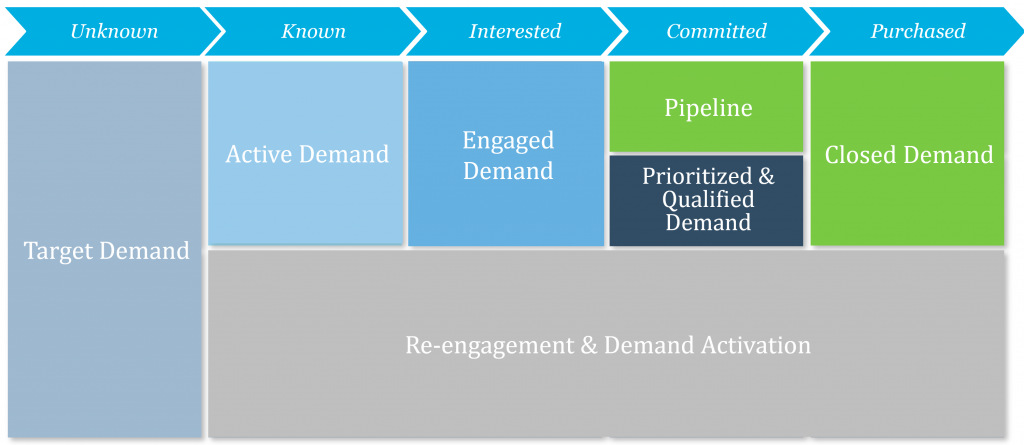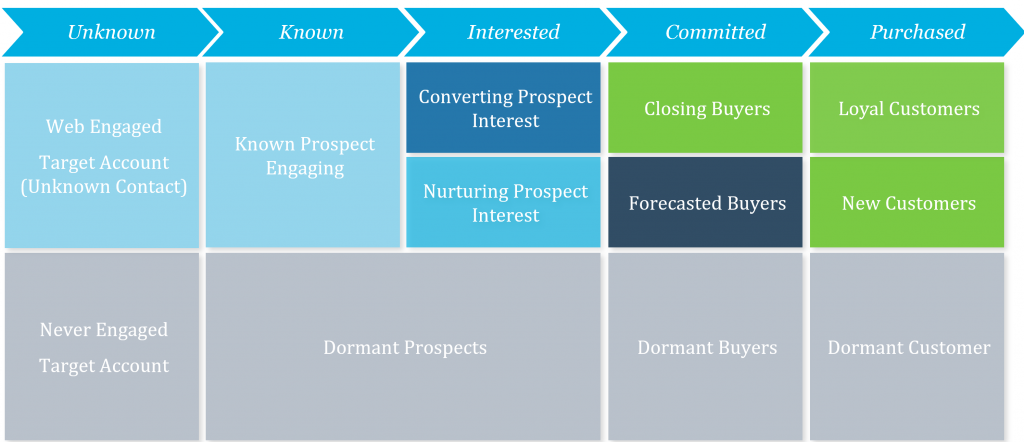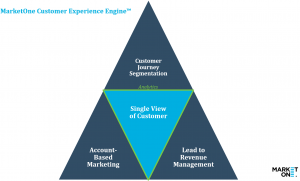Customer Experience Orchestration: refocusing on CX. Where to start? If you’re reading this, you probably already have the right mix of ingredients.
Listen to Shaun discussing orchestrating the buyer journey and using data to your advantage on Oktopost’s ‘B2B Marketing Now’ podcast.
We’re fortunate to be in an industry that possesses such intense and rapid growth that it barely resembles what it was not too long ago. B2B Marketing has gone from deeply creative and provoking thinking to a mix of software engineering combined with data management, and now requires agile development methodology in order to enable transformation in a meaningful way. All of this, plus we still must be creative! So ok – let’s zoom into today.
The fundamentals of B2B marketing funnel orchestration in most enterprises will likely entail some form of scoring, multi-channel nurture, a measurable lead lifecycle and a 360 view of customer. Let’s say you’ve got those. Perfect. Every enterprise deep in the digital space will have these ingredients. These are the bricks of the marketing house we all need to build. But where is the mortar?
We must go beyond point solutions to solve business problems – the customer experience must be treated as a cohesive whole, so why can’t the solutions also be similarly cohesive? Enter: back to basics. Remember Marketing 101: the customer experience is everything?
“Well-informed customers will want to do business with companies that know them and their business intimately, have a clear understanding of where it’s headed and can design an experience that meets their needs. Customers will expect a personalized experience.” – Walker Information, Customers 2020.
According to the 2017 Gartner Customer Experience in Marketing Survey, 81% of marketing leaders responsible for customer experience (CX) said their companies would mostly or completely compete on the basis of CX and not just their product alone. Accepting the above, and understanding that product differentiation alone is no longer enough in this hyper-competitive digital environment, one must tie all point solutions together into a vision which elevates all marketing efforts – regardless of where you sit within the marketing department.
It’s interesting that in some cases, marketing has lost sight of its original goal. It became enthralled with the new and shiny, adopted automated processes and became too hands off in an ever increasingly data-centric world. Let this be a reminder to make the data work for you; Single View of Customer/Customer 360 (SVoC) needs to be turned into a CX engine – constantly tracking, serving, and informing what peripheral systems do in order to meet the customer at where they are. Serve to their need and make the experience both tailored and easy. This must be the foundation of any larger strategy. Without successful implementation of this, we cannot expect the elevation of any other solution.
Meet the Customer Journey Framework

CX management must include the above scenarios at minimum; it doesn’t have to be said that the above is the Sirius Decisions model, broken out by where segments fall within the world of CXM. However, we recommend breaking this out further for greater accuracy and flexibility of targeting:

The above model aligns the core activities associated with the buying cycle. Knowing who is in which segment is critical to governing the CX engine, and tying an SVoC initiative to the customer journey is critical path to creating your own first-party data-powered, platform orchestration machine! Having the ability to automate the measurement, tracking and segmentation of all of your database – both known and unknown contacts, will enable more robust targeting and CX management across the entire funnel.
Most enterprises struggle with database utilization. Often times, over half of an entire database is left dormant and untapped by marketing teams – blind spots to many marketers. Having an automated segmentation system such as this uncovers those blind spots and informs the business on pivots that can be performed in incredibly agile ways. Imagine a world where this segmentation engine constantly refers to the database of ever-growing active engagements, and automatically groups these individuals/accounts into their respective buckets for targeting. Overlay that with product/service interaction data for rich customization, and also allow the content to change as the account interactions move from stage to stage. No longer will you be confined by strictly governed, long tail digital nurtures that quickly lose their relevance. Instead, you adopt a new rapid means to target the customer based on what their interactions are telling you.

Operationalizing this kind of framework is paramount in achieving excellence in CXM, and brings the creative thinking of content and branding back into focus for marketing. This in turn brings relevance back to nurtures – creating a robust platform for hyper-targeted modular nurtures that do not tie the customer to an assumed linear progression through the funnel. Human nature is not so simple – it is flexible and malleable – so too should be your approach to CXM.
Thus, data remains central to all of your marketing strategy, rooted in a customer-centric initiative and driving business directive forward. This in turn enables the formulation of other strategies that feed into each other.


